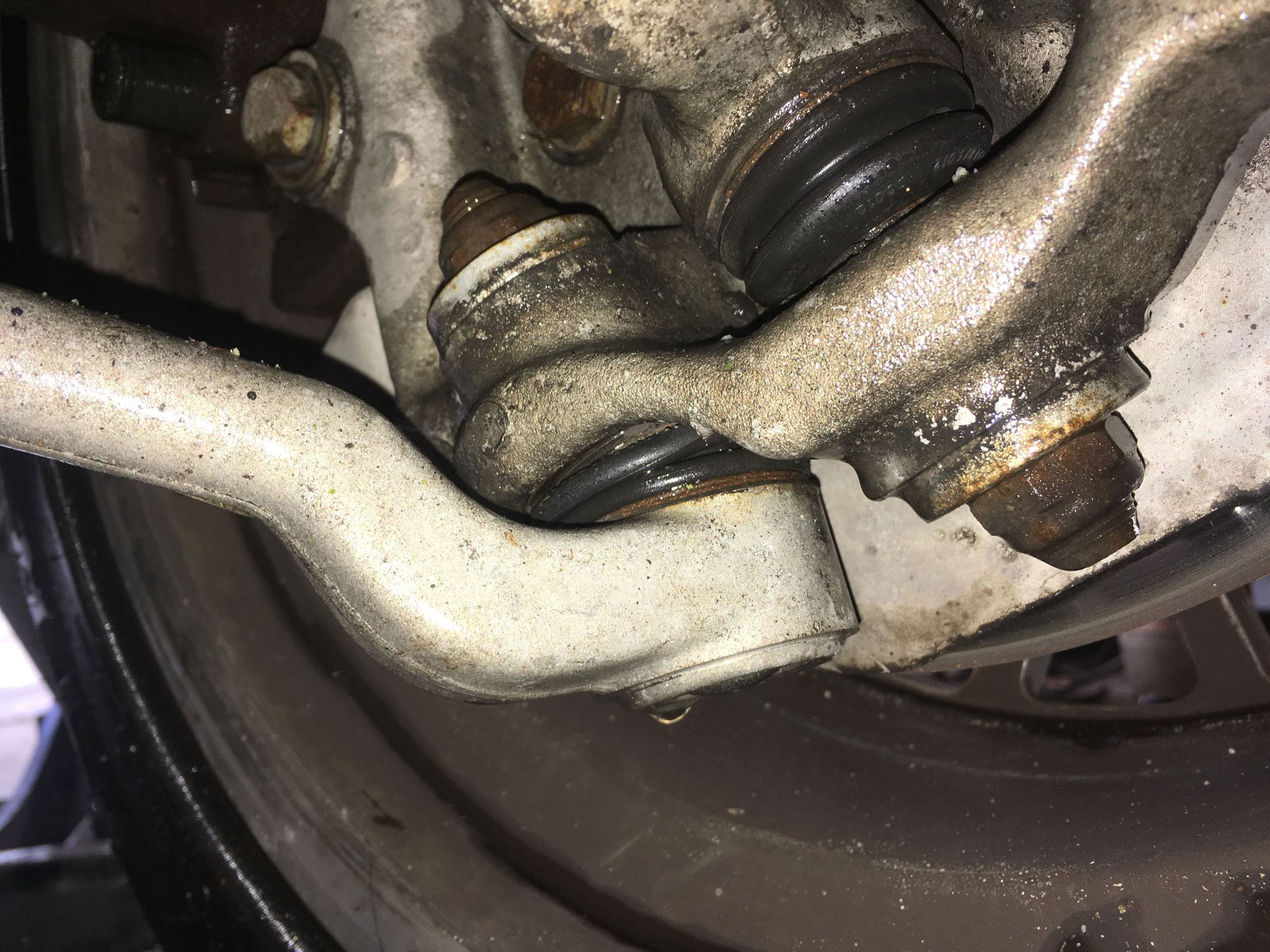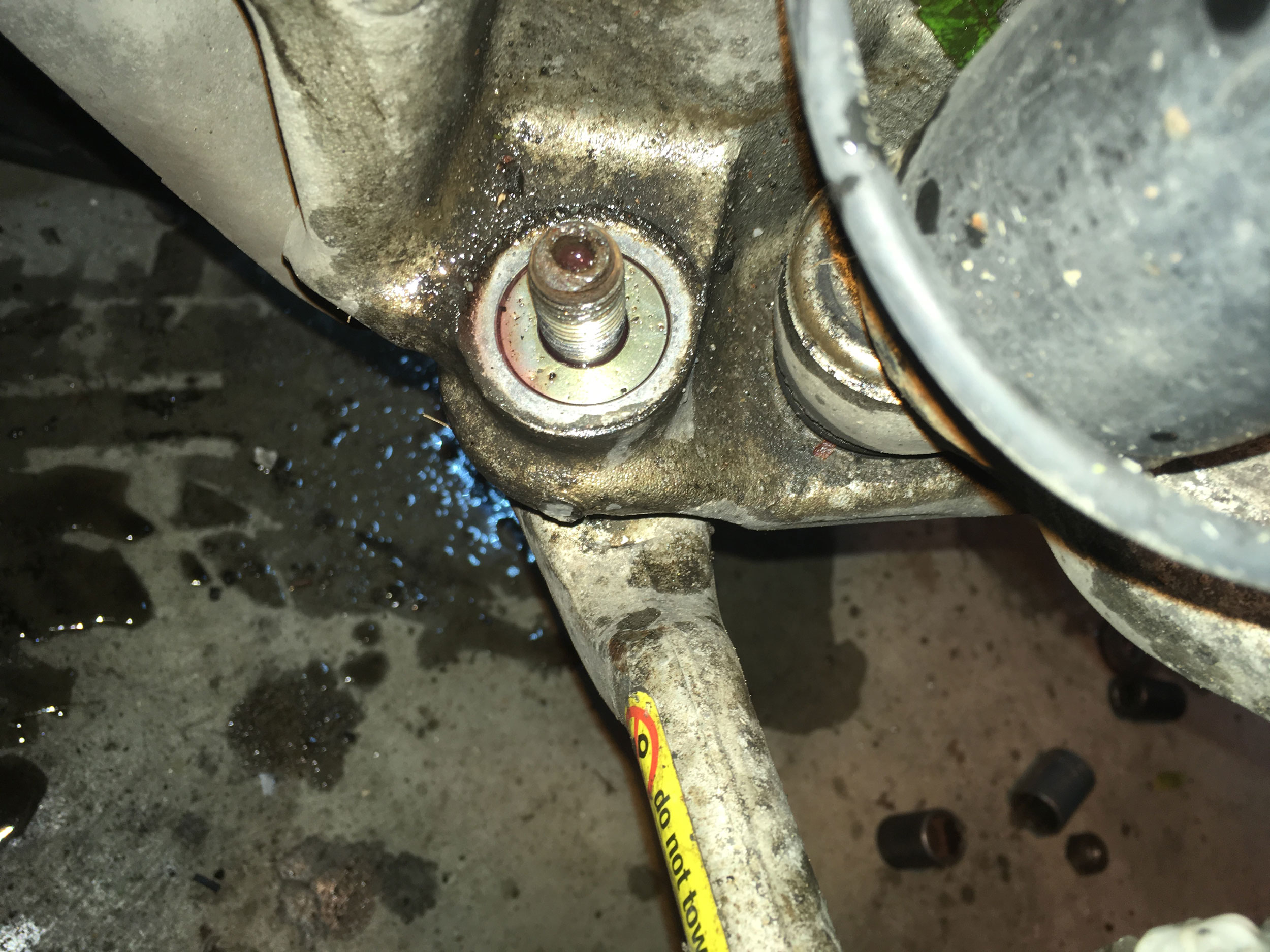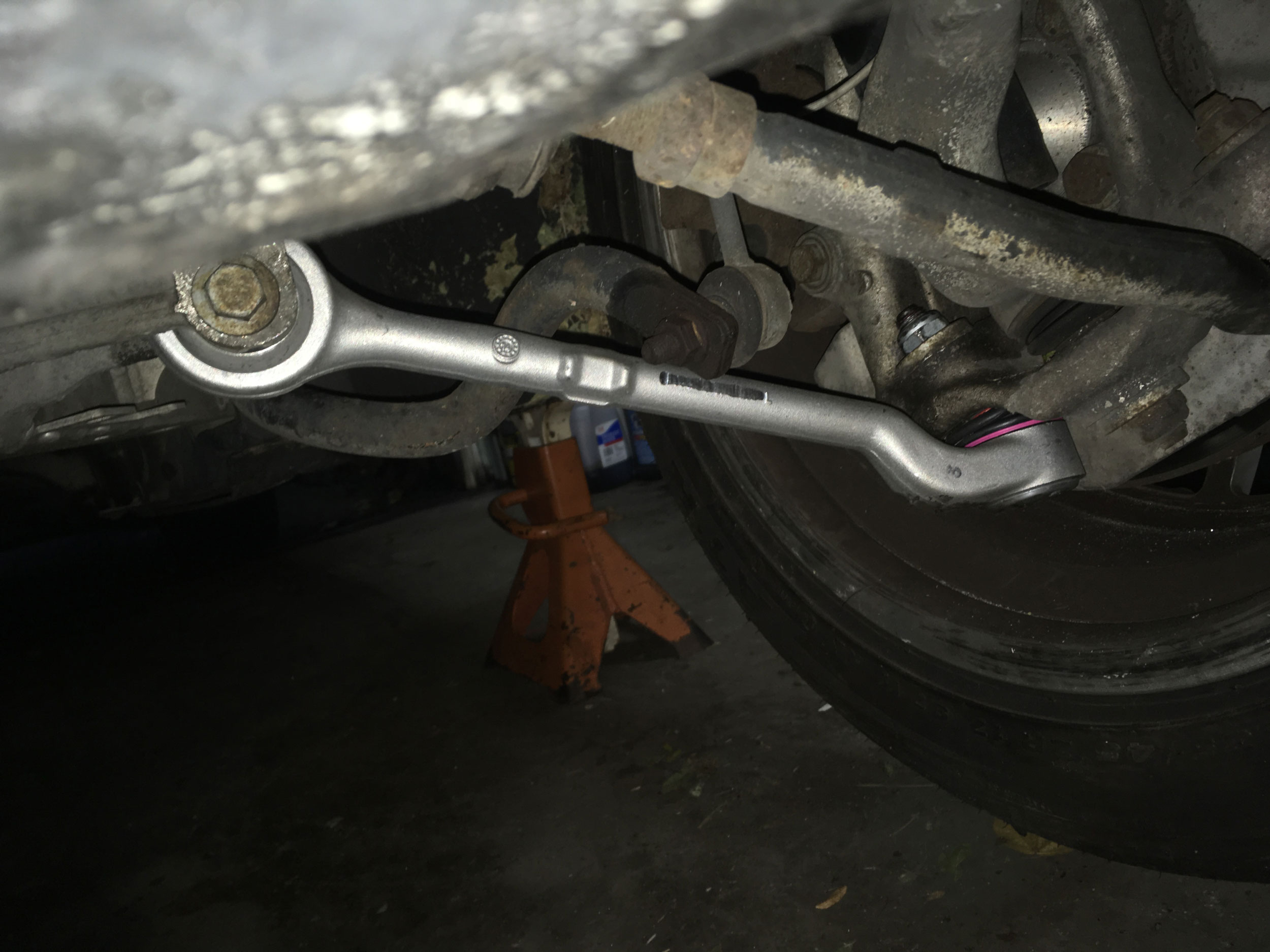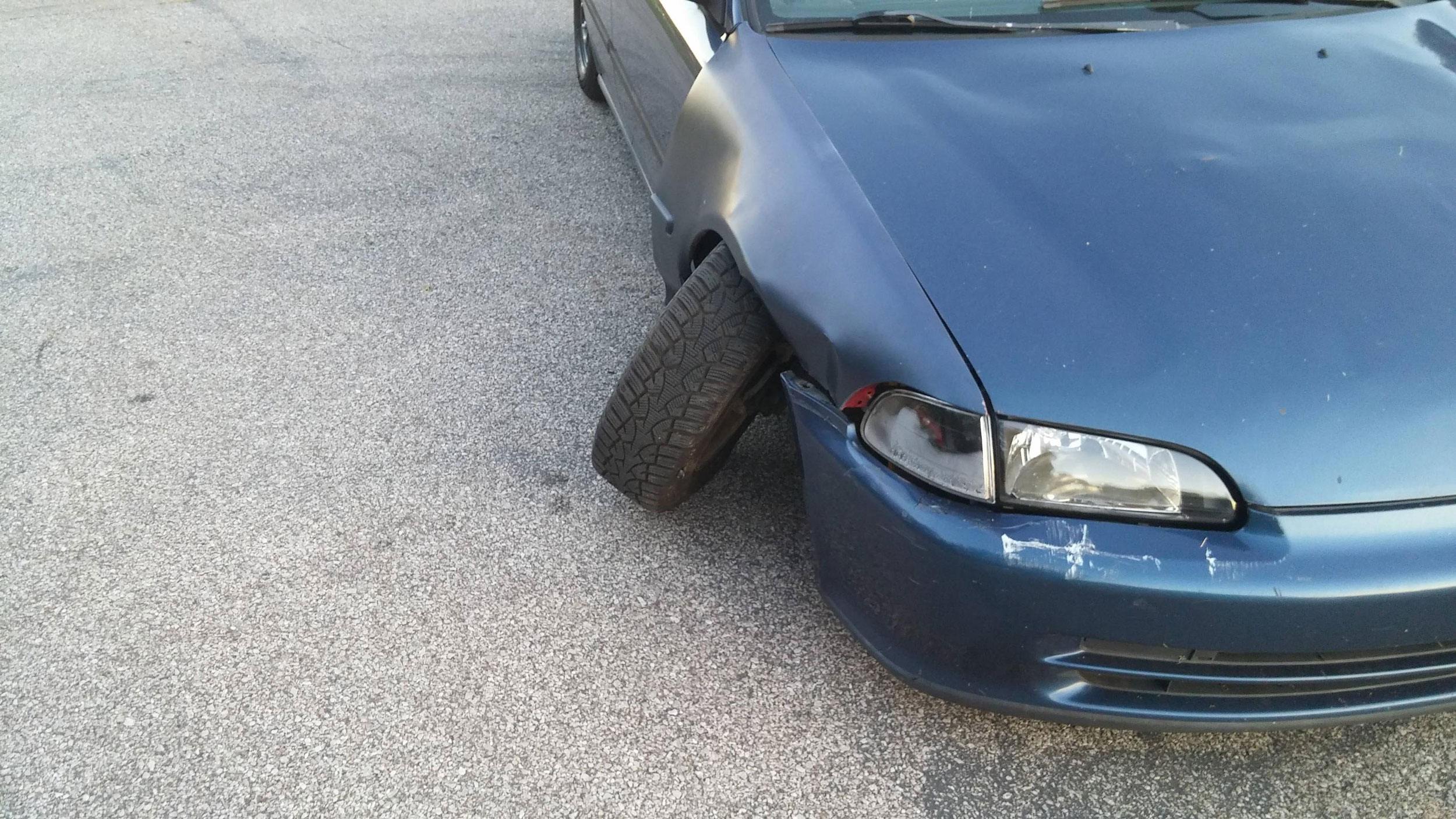Caution: Lower control arm failure could be ball joint failure
In my oft-repeated list of “The Big Seven” things likely to strand a vintage car (fuel delivery, ignition, cooling, charging, belts, clutch hydraulics, and ball joints), it may seem that ball joints are a forced fit. Nearly everyone who has distance-driven a vintage car has had the points close up at an inopportune moment, or had the temperature gauge swing into the red in traffic, or had a bad alternator fail to charge the battery. But fewer people have lost a ball joint while driving.
That’s fortunate, because if you Google “ball joint failure,” you’ll see images of cars with a front wheel folded under the fender. While it’s not as common as the other failures on the list, I include it precisely because, when a ball joint fails, it can cause catastrophic loss of control.
The ball joint is the component that sits at the nexus of the front suspension and the steering, allowing both rotation when you turn and vertical suspension travel when you hit bumps. This dual function creates significant wear on the joint, and explains why the results can be so catastrophic if it fails. If the ball separates from its socket, there’s nothing fixing the toe-in, the caster, or the camber, and the entire strut housing can fold like a twisted ankle and get jammed under the fender.
As I wrote last year, on cars with MacPherson struts (which is most cars), the ball joint is at the bottom of the strut. On vintage cars, there’s a steering knuckle or Pitman arm that bolts to the bottom of the strut housing, and the ball joint is a separately-replaceable part that attaches to it. As its name implies, it has a ball-in-socket arrangement, with a tapered shaft protruding from the end of the ball. The shaft is bolted through the bottom of steering knuckle, and the socket is part of a plate that’s bolted to the lower control arm. In this way, the strut can go up and down, the steering knuckle can turn when the car is steered, and the ball joint responds to both motions. If the car exhibits clunking over bumps, the classic test is to jack the car up and squeeze the ball joints with a big set of slip-joint pliers to check for vertical play in the ball and socket.
So, having already covered the topic, why address it again? Because, in a newer car, the front suspension and steering is usually more complex than it is in a vintage car. The ball joint may be directly integrated into a lower control arm, an upper thrust arm, or both. It may not even be referred to as a ball joint. But its integrity is just as important, and its failure can be just as catastrophic.
On a car where the ball joint is integrated with the lower control arm or upper thrust arm, the symptom of wear is often a light knock and/or shudder of one of the front wheels when the brakes are applied. This may feel a little like warped brake rotors, but the brake pedal usually doesn’t pulsate, and the shudder typically isn’t telegraphed into the steering wheel to the same degree. Jacking up the car, grabbing the front wheel and 3 and 9 o’clock, and pushing and pulling should reveal play in the ball joint or whichever component is the source of the vibration.
Recently, on the way home from a 150-mile drive in my 2003 BMW E39 530i Sport, what had been a very mild “Is there a tiny knock in the left front wheel on braking?” became noticeably worse. As a precaution, I drove home at 45 mph in the right lane with the flashers on. As soon as I got home, I jacked up the car, set it on jack stands, wiggled the left front wheel, and discovered an alarming amount of play. This car has both a lower and an upper control arm, each with a ball joint, but I quickly isolated the source to the lower control arm ball joint.

Obviously, the difficulty in replacing the component depends on the make and model. On a BMW E39, lower control arms are easy, especially if you have an impact wrench to zip the nuts off. Otherwise you need to use an Allen or Torx key to hold the center of the shaft still while you undo and tighten the nuts. Upper control arms are more involved, as the nut holding the ball joint is occluded by the strut, requiring a collar to be loosened and the strut to be slid upward first.
There’s a school of thought on front-end work that if you’re going in, you should do it all—bushings, control arms, tie rods, everything. At a minimum, it’s advised that you do components in pairs—that is, if the left lower control arm is bad, replace both the left and right. Of course, since on a BMW E39 you need to detach the front struts to get the upper control arms out, if the struts are original and you’re going to slide down that slippery slope, you might as well change those too. I gave the slippery slope a very wide berth by deciding to deal only with the worn-out left lower control arm.
As with nearly all parts, one has the choice of buying Original Equipment (OE) front end components at the dealer, buying Original Equipment Manufacturer (OEM) parts online, or sourcing them through the aftermarket. This is a tradeoff of quality, price, and availability. In my case, it was 3 p.m. on a Sunday when I diagnosed the problem. The dealer list price on the part was $320, but even if I wanted to pay that, the parts counter at the dealership wasn’t open. If I needed to fix the car before Monday morning, I would’ve had no choice but to see if Autozone or some other generic outlet that’d be open on a Sunday had some off-brand part. Fortunately I wasn’t under that kind of pressure; I work from home and have other cars I can drive. I could’ve picked up the OE part at the dealer on Monday morning, but instead I opted to save the money, buy an equivalent $95 OEM part online, leave the car jacked up in my garage, and wait two days for the part to arrive.
Again, partially due to the utility of air tools, I had the lower control arm changed in about an hour. On this car, it’s simple. You just remove the pivot bolt holding the bushing in the subframe, spin off the nut holding the ball joint, pop out the tapered shaft with a ball joint separator, and install the new part.

The only complication was needing to torque the bolt through the bushing while the suspension is under load. There’s not enough room to crawl beneath the car to do this when it’s on the ground, so it requires jacking up the front wheel until the car lifts off the jack stand. I re-supported the car at that point with a redundant floor jack, torqued the bushing, and let everything down.

I drove the car and was delighted that the problem was completely solved, which is always the payoff of fixing something yourself. But I soon began hearing noises from the right side. I now have the right lower control arm on order. Other than having to jack up the car twice, there was little penalty from doing them one at a time.
But the take-away message is this: Even if your car doesn’t have separately-replaceable ball joints, if the car exhibits steering or suspension issues that are traceable to play in a component that is, in fact, a ball joint (e.g., is attached to the bottom of the strut and pivots both with steering and strut travel), do not continue to use the car. Either take it in immediately for service, or park it and fix it. You really don’t want to be wrong about it.
***
Rob Siegel has been writing the column The Hack Mechanic™ for BMW CCA Roundel magazine for 30 years. His most recent book, Just Needs a Recharge: The Hack Mechanic™ Guide to Vintage Air Conditioning, is available on Amazon (as are his previous books). You can also order personally inscribed copies here.


